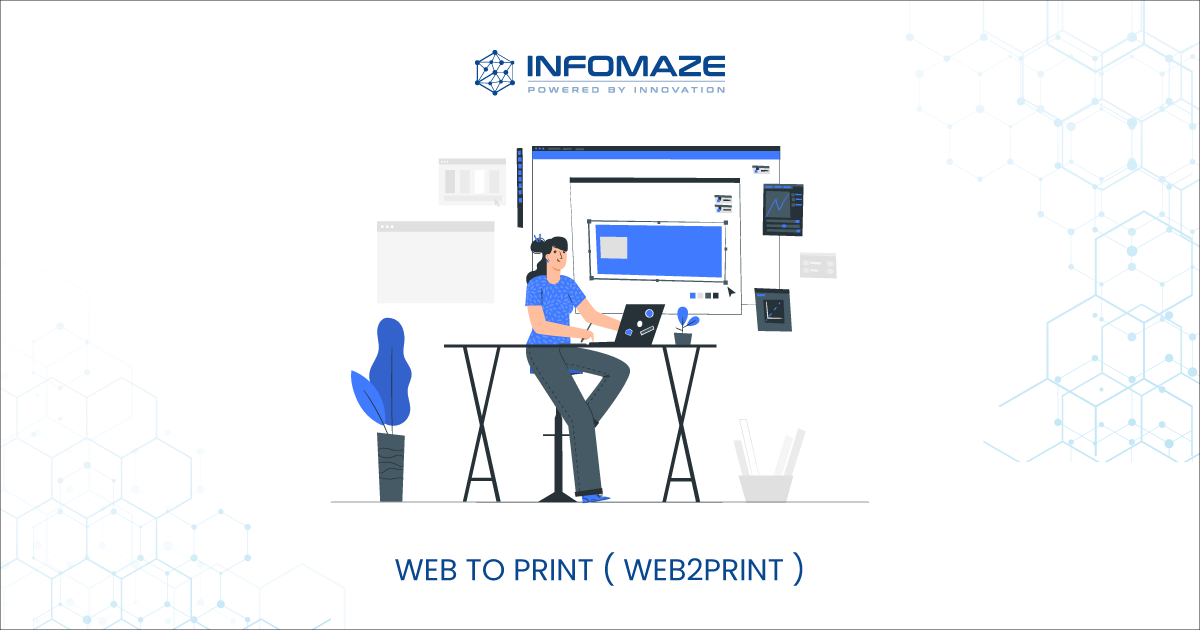In today's fast-paced digital environment, businesses are regularly seeking new ways to enhance their offerings and increase customer satisfaction. One of the most significant advancements in this regard is the emergence of web-to-print software, which has transformed how print shops operate. This technology allows for the smooth integration of online ordering, customization, and digital printing, providing a streamlined solution that meets the increasingly personalized demands of consumers.
In light of the print industry embraces digitalization, web-to-print solutions are changing traditional printing processes. By automating workflows and enabling effective order management, print shops can now deliver customized products at scale. This article will examine the benefits of web-to-print software, its effect on customer experience, and how it can empower businesses to succeed in a competitive marketplace. Whether you are a printing professional or a business looking to expand your product offerings, understanding the role of web-to-print technology is important for navigating the future of personalized printing.
# Understanding Web to Print Technologies
Web2Print technology is a system that enables organizations to oversee print jobs through an web-based platform. https://posteezy.com/unlocking-creativity-top-features-web-print-solutions streamlines the print production process by enabling customers to customize and order printed materials straight from their web browsers . YOURURL.com eliminates the requirement for traditional processes of placing print orders, resulting in it easier for users to customize products and guaranteeing a greater streamlined workflow for print service providers .
One of the main features of web-to-print software is its ability to facilitate tailored and customizable printing choices . Clients can share their artworks, select designs , and change various elements to meet their unique preferences. This degree of customization leads to greater customer satisfaction and engagement , leading to an growth in returning customers . Additionally, Web2Print systems enhance order handling, allowing organizations to monitor and fulfill orders effectively while minimizing errors and delays .

The growth of digital shopping has additionally increased the role of web-to-print technology in the print industry. As more customers look for internet-based options for their print requirements, organizations that leverage these technologies can enhance their competitive advantage . Integrating Web to Print software into an digital environment creates a cohesive experience , where users can easily browse, design , and place orders for print products , resulting in better user satisfaction and operational efficiencies .
Benefits of Web-to-Print Systems
Web-to-print systems offer significant benefits for both print shops and businesses. First and foremost, they streamline the purchase process, minimizing the duration it takes for clients to create and approve their printing orders. Customers can easily upload files, customize layouts, and place purchases from anywhere, which enhances ease of access and accessibility. This online immediacy not only improves customer satisfaction but also allows companies to attract a broader market, tapping into online sales that were previously difficult to achieve.
Another significant benefit is the automation of processes. Web-to-print technology can handle various responsibilities, such as order management, financial transactions, and production tracking, with minimal human intervention. This automation leads to increased productivity, as it minimizes human mistakes and speeds up processing times. As a result, print shops can handle greater volumes of jobs without compromising on standards, enabling them to expand their business effectively while fulfilling customer demands quickly.
Lastly, web-to-print solutions support a degree of personalization and customization that traditional printing methods cannot match. Customers can create unique products that reflect their individual preferences, which not only sets companies apart in a competitive market but also builds customer loyalty. By utilizing VDP and responsive templates, print providers can effortlessly accommodate personalized requests, making it simpler than ever for clients to create the ideal print products for their requirements. This functionality ultimately improves the overall customer experience and drives repeat sales.
A Prospects of Web2Print Technology
As we gaze toward the future of web-to-print technology,, the artificial intelligence and machine learning will set revolutionize the way print shops operate. These advancements will enhance automation capabilities, allowing for more intelligent order processing and customer interactions. By leveraging data-driven insights, print businesses can refine their workflows, streamline order fulfillment, and offer highly customized products that meet the changing demands of consumers.
Sustainability is another vital trend defining the future of web-to-print solutions. As ecological concerns grow, print shops are more and more adopting eco-friendly practices. Web-to-print technology can support these initiatives by enabling accurate inventory management, reducing waste, and providing options for sustainable materials. Forward-thinking businesses will leverage these capabilities to not only attract environmentally conscious customers but also to drive operational efficiencies.
The emergence of cloud-based solutions is changing how print companies manage their operations. Cloud technology allows for greater accessibility and collaboration, enabling teams to work remotely and access essential tools from anywhere. This transition not only enhances productivity but also opens up opportunities for smaller print shops to vie on a larger scale. As technology continues to evolve, print businesses must stay ahead by embracing these emerging trends and innovations to thrive in the competitive landscape.
